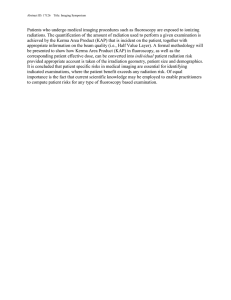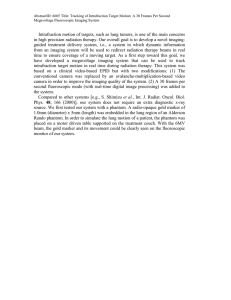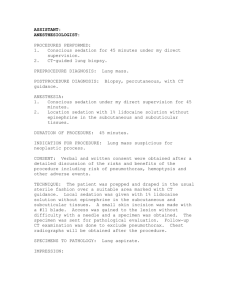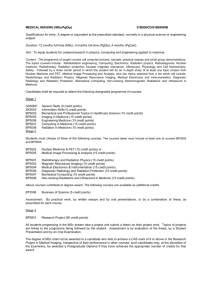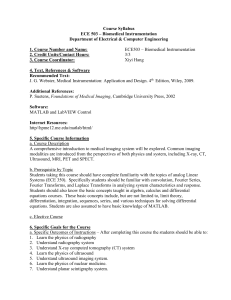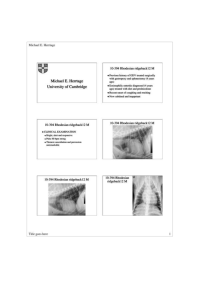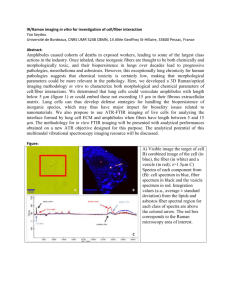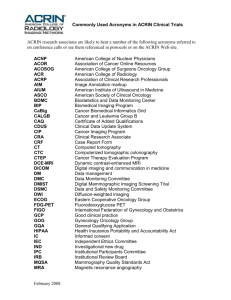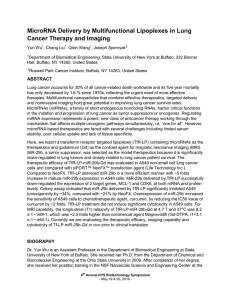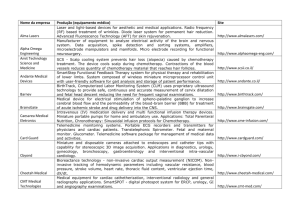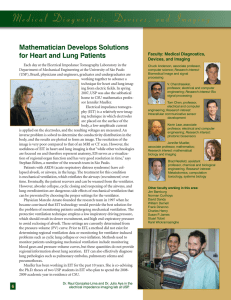Current Management of Complicated Pneumonia in Children
advertisement
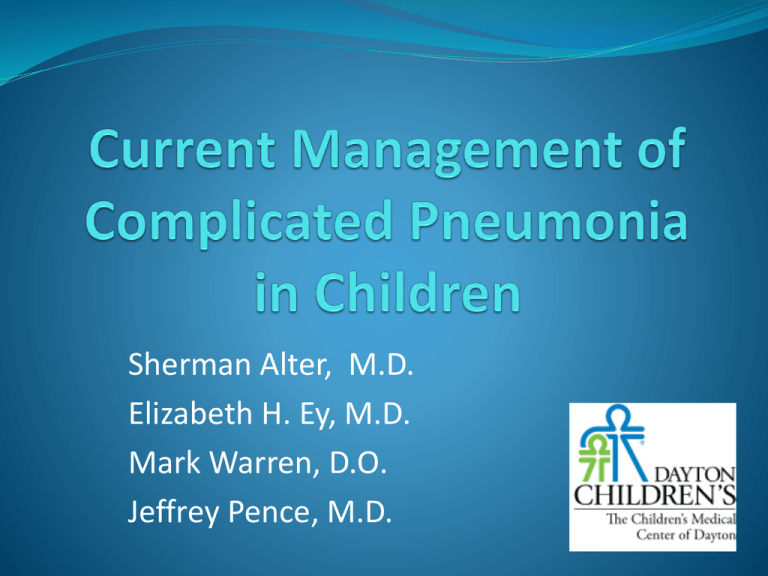
Sherman Alter, M.D. Elizabeth H. Ey, M.D. Mark Warren, D.O. Jeffrey Pence, M.D. Elizabeth H. Ey, M.D. Medical Imaging Dayton Children’s Medical Center •Chest radiography •Fluoroscopy •Ultrasound •Computerized Tomography •Magnetic Resonance Imaging •Radionuclide lung scan •Chest radiography • Portable or in department • Vertical or horizontal beam • Low radiation dose • No sedation • No preparation • Inexpensive •Fluoroscopy • Dynamic observation • • • Trachea Diaphragm Catheter, wire, tube placement •Ultrasound • Department or bedside • Most useful for evaluation of pleural fluid • Simple versus complex fluid • Consolidated lung • Assess blood flow • No radiation • No sedation •Computerized Tomography (CT) • High resolution, soft tissue contrast • Multiplanar and 3D reconstructions • IV contrast usually needed • Sedation may be needed • NPO guidelines • May need pre authorization • Radiation dose •Magnetic Resonance Imaging • Soft tissue contrast • Spine, spinal cord, masses, malformations • Cardiovascular imaging • Often requires sedation • Sometimes requires contrast • No ionizing radiation • May need pre authorization •Radionuclide chest imaging • Perfusion imaging • • Quantify blood flow to each lung Demonstrate areas of diminished perfusion • Ventilation imaging • Aerosol • No portable studies •Lung infection - inhaled, hematogenous •Alveolus fills with fluid and inflammatory cells •Bacterial pneumonia typically unilateral • Segmental • Lobar •Abnormal accumulation of fluid in pleural space secondary to adjacent pulmonary infection •Simple, transudative effusion •Fibrinopurulent exudate (empyema) Ultrasound •Cavitating or necrotizing pneumonia •Pneumatocele •Lung abscess •Bronchopleural fistula •Severe inflammation in lung parenchyma •Thrombotic occlusion of alveolar capillaries •Ischemia with eventual necrosis and cavitation •Congenital malformation • CCAM • Sequestration • Bronchial obstruction • • Congenital Acquired (foreign body) • Tumor Mark Warren, D.O.
